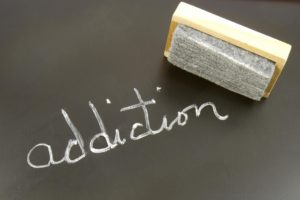Nipissing First Nation youth says addiction is not a choice, but a disease
Your best friend texts you one night, explaining that they can’t fall asleep because they decided to try meth for the first time. They’re only 16! How could this happen? Months pass, yet although you took their promise for it only happening once seriously, you realize it was only the beginning of something much bigger than the both of you.
Whether or not addiction is a choice or a disease has been a controversy that I’m sure many of us have seen on Facebook, YouTube and other social media platforms. The truth is, understanding addiction requires understanding the addict, and to understand the addict, we need to understand the brain.
Addiction is a disease not a choice. According to the National Institute of Drug Abuse (NIDA), addiction is defined as “a chronic relapsing brain disease that is characterized by compulsive drug seeking and use, despite harmful consequences”. Along with the NIDA, medical professionals such as doctors and psychologists label addiction as a disease. If they didn’t, we would not have access to recovery options such as Alcoholics Anonymous, rehab facilities, as well as access to suboxone and other medications to help with addiction. This takes the possibility of addiction being a choice out of the picture. Why would the government provide programs and services to people that were choosing to be addicts then?
Now the real question is, why do we get addicted and why is it a disease so hard to overcome?
Another statement from NIDA says, “brain images studies from drug addicted individuals show physical changes in areas of the brain that are critical for judgement, decision making, learning, memory, and behaviour control”. When our brain is introduced to addictive substances such as alcohol, meth, cocaine, and cigarettes, the natural chemistry of the brain is disrupted. This causes a person’s brain to completely rewire its rational and survival mechanisms. In turn, this creates the addictive mindset to include thoughts and beliefs such as, “drugs are more important than food and water”, and “I can’t make it through my day without consuming alcohol”.
An important chemical affected when the brain is introduced to something addictive is dopamine. Dopamine is the chemical that makes you feel good. Without dopamine, we would not be able to properly function and survive. Our brain produces a natural level of dopamine to keep us healthy and well balanced, but when we introduce our brain to things such as meth, cocaine, and alcohol, it overloads your brain with dopamine. This is why these substances create such a euphoric, rewarding feeling. This is also why stopping these substances can feel impossible. As the substance starts to leave your body, so does the dopamine. Since dopamine levels were so high when addicted, as they regulate to what was supposed to be normal, the person may start to feel drained and depressed, and wanting more dopamine. Your brain tells you that you will never be happy or content without that high level of dopamine which one can believe is only reached through the addictive substance.
Some may argue that addiction is not a disease, but a choice; however, the only choice being made is the choice of trying the substance in the first place. For example, we do choose to smoke or have a drink at the end of a stressful day. We do choose to try cocaine at a party as a result of curiosity or peer pressure. What’s not chosen is the impulse and craving for more, the tweaks and the outbursts, the delusion and the restless nights spent in cold sweats. This is the result of a worldwide disease—addiction.



